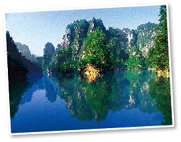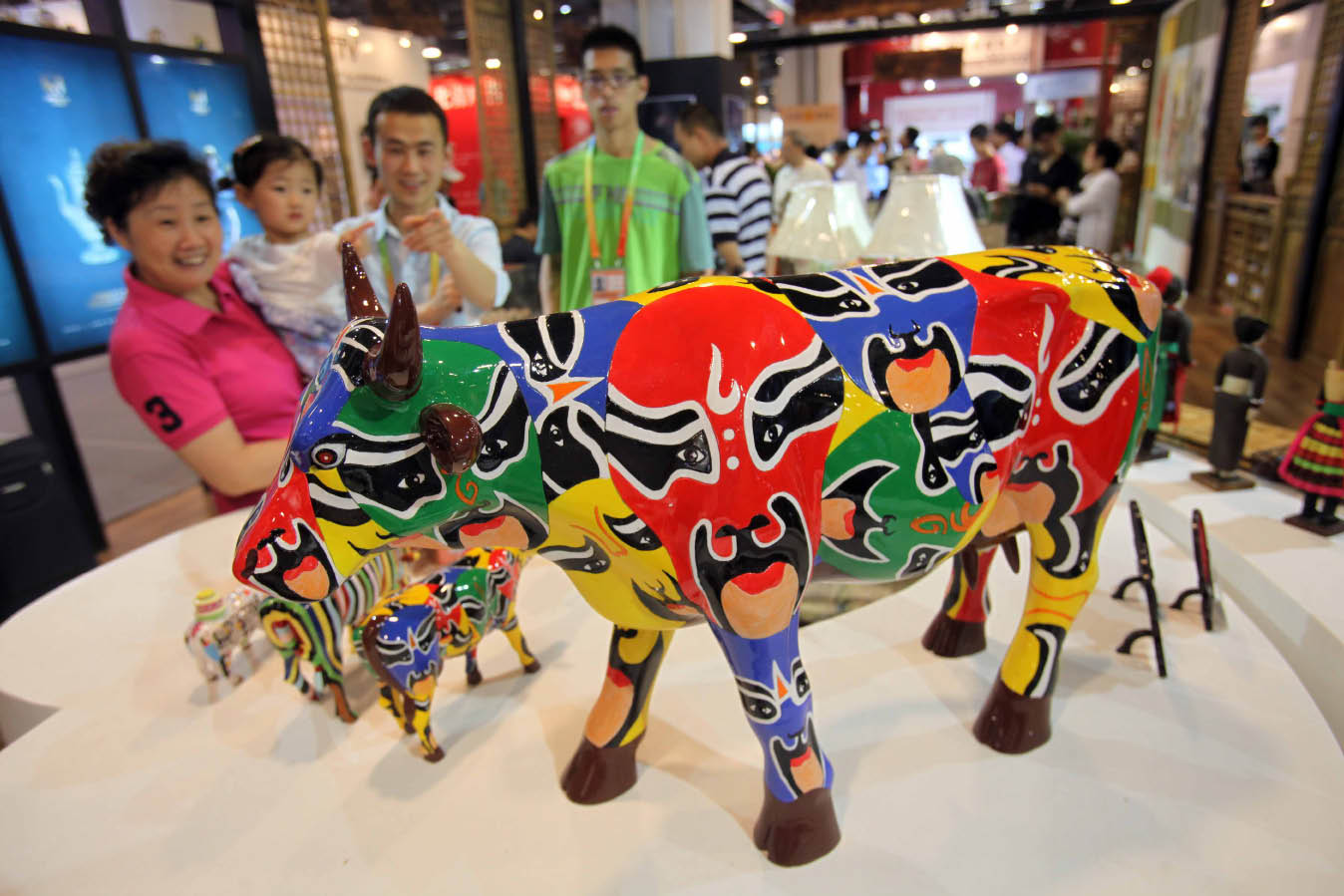Zhangjiajie:
IN an article entitled "China's Ancient Skyline" published on July 15, 2007 in The New York Times, American journalist Simon Winchester wrote about his tour of Zhangjiajie, describing scores of mighty towers climbing endlessly into the foggy sky, like some surreal and unexpected ruined city. "It is a sight utterly to astonish the unprepared, akin only perhaps to the moment when a Midwestern soybean farmer is flushed out of the Lincoln Tunnel into the canyons of Midtown Manhattan." He added, "In terms of astonishment I found myself saying time and again, as I gaped from cliff-edge and bridge and viewing tower: This is as great as the Great Wall."
Zhangjiajie, in northwestern Hunan Province, consists of more than 3,000 peaks, described as "beautiful girls."
Unique Landforms
Some say that the terrain of Zhangjiajie is similar to karst terrain of Slovenia, but a geologist pointed out that Zhangjiajie's topography is unique in that its special rock strata have undergone millennia of movements and gravity collapses caused by water erosion in the subtropical climate.
 |
| Beautiful Baofeng Lake |
About 1.5 billion years ago, strong movements in the Earth's crust in northwestern Hunan turned the land into a sea trough and a volcano on the seabed erupted. Quartz in the lava formed the "eggs" of Zhangjiajie's sandstone peak forest.
Sea erosion then occurred in northwestern Hunan 380 million years ago. Zhangjiajie's Wulingyuan, a shallow sea at that time, received large amounts of soil and loose clastic rocks. Later, these became a sandstone peak forest consisting of more than 3,000 knife-edged pillars. Certain geologists have even proposed naming this type of formation a "Zhangjiajie" Landform.
The standard karst landform is in Slovenia, well known for its karst caves. But its peak forest is not as beautiful as Zhangjiajie. The Stone Forest in Yunnan, representative of karst landforms in China, is beautiful, but its vegetation coverage is inferior to that of Zhangjiajie, where pines grow on towering cliffs.
Highlights of a Scenic Landscape
Zhangjiajie's beauty was not known far and wide until the 1980s, although it holds all sorts of scenic sights: peaks, forests, caves, springs, lakes and waterfalls. Over the past 30 years, it has become the country's first national forest park, a national 5A scenic area, a world natural heritage site and a world geology park.
Shen Congwen, a famous writer, described Zhangjiajie thus: "Entering western Hunan Province, all the sights are quietly beautiful with a bit of melancholy. Depicting any section would require a good painting from the Song Dynasty. Everything is pure poetry." Water gushes from mountain crevices and converges into streams to form lakes. The most unforgettable bodies of water are Jinbian Stream, Baofeng Lake and the Maoyan River. Jinbian Stream is like a Tujia ethnic song flowing between peaks. Along it are towering cliffs forming a corridor. Green vegetation decorates the steep cliff faces, making the mountains look gentle and pretty. Baofeng Lake looks like jade inlaid on the mountain, and the water is clear and green.
|


